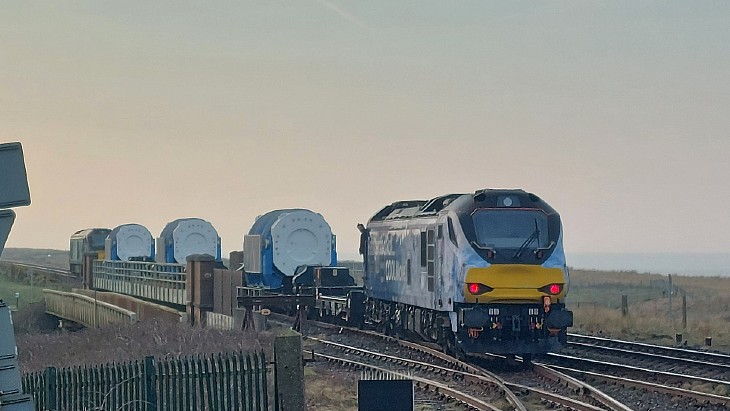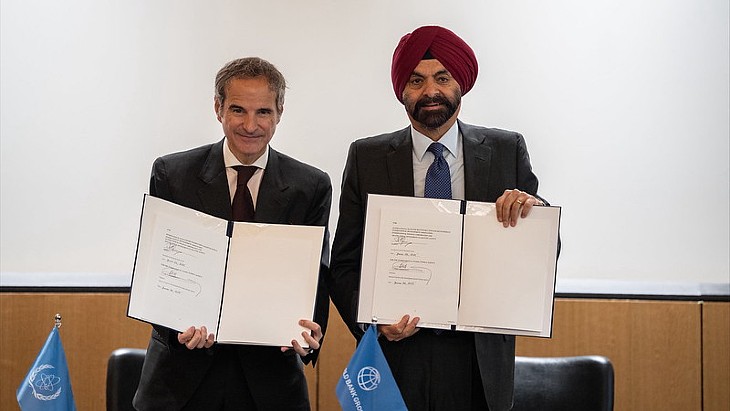Russia clear to remove used fuel from Lepse cargo ship
.jpg)
Lepse was taken out of service in 1988, but holds 639 used fuel assemblies, some of which have been damaged. Its decommissioning is being carried out with the support of the European Bank for Reconstruction and Development (EBRD).
The EUR23 million (USD27 million) cover was financed through the Nuclear Window of the Northern Dimension Environmental Partnership Support Fund, an international fund with contributions from Belgium, Canada, Denmark, the European Union, Finland, France, Germany, the Netherlands, Norway and the UK, and managed by the London-headquartered bank.
Representatives of the EBRD, Russian state nuclear corporation Rosatom and the government of Murmansk took part in a ceremony at the shipyard last month to mark completion of the cover.
According to Bellona news agency, Oleg Kryukov, director of state policy in nuclear and radiation safety at Rosatom, said: "Last year, we began transporting used nuclear fuel from the storage facility in Andreeva Bay and more than 3000 assemblies have already been sent for reprocessing. Now it is time to unload the used nuclear fuel from Lepse."
The former dry cargo ship Lepse was built in 1934. The new cover over its dry dock will include a workshop for removing the used fuel assemblies, which will then be sent for reprocessing at the Mayak Chemical Combine in the Chelyabinsk region.
Russia's Federal Center for Nuclear and Radiation Safety (FSUE FCNRS) will supervise unloading of the fuel, which is scheduled for the first quarter of 2019 with the aim of completing the process by 2020.
_17992.jpg)
_75800.jpg)







..._58412.jpg)

